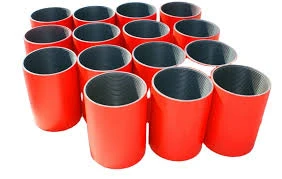- Afrikaans
- Albanian
- Amharic
- Arabic
- Armenian
- Azerbaijani
- Basque
- Belarusian
- Bengali
- Bosnian
- Bulgarian
- Catalan
- Cebuano
- Corsican
- Croatian
- Czech
- Danish
- Dutch
- English
- Esperanto
- Estonian
- Finnish
- French
- Frisian
- Galician
- Georgian
- German
- Greek
- Gujarati
- Haitian Creole
- hausa
- hawaiian
- Hebrew
- Hindi
- Miao
- Hungarian
- Icelandic
- igbo
- Indonesian
- irish
- Italian
- Japanese
- Javanese
- Kannada
- kazakh
- Khmer
- Rwandese
- Korean
- Kurdish
- Kyrgyz
- Lao
- Latin
- Latvian
- Lithuanian
- Luxembourgish
- Macedonian
- Malgashi
- Malay
- Malayalam
- Maltese
- Maori
- Marathi
- Mongolian
- Myanmar
- Nepali
- Norwegian
- Norwegian
- Occitan
- Pashto
- Persian
- Polish
- Portuguese
- Punjabi
- Romanian
- Russian
- Samoan
- Scottish Gaelic
- Serbian
- Sesotho
- Shona
- Sindhi
- Sinhala
- Slovak
- Slovenian
- Somali
- Spanish
- Sundanese
- Swahili
- Swedish
- Tagalog
- Tajik
- Tamil
- Tatar
- Telugu
- Thai
- Turkish
- Turkmen
- Ukrainian
- Urdu
- Uighur
- Uzbek
- Vietnamese
- Welsh
- Bantu
- Yiddish
- Yoruba
- Zulu
Understanding the Key Distinctions Between Casing and Tubing in Oil and Gas Operations
The Difference Between Casing and Tubing in Oil and Gas Drilling
In the oil and gas industry, drilling operations rely heavily on two essential components casing and tubing. Both are crucial for the successful extraction of hydrocarbons, yet they serve distinct purposes and have different characteristics. Understanding the difference between casing and tubing is vital for anyone involved in or studying the oil and gas sector.
Casing The Protective Barrier
Casing refers to the series of steel pipes that are installed in the borehole after a well is drilled. Its primary purpose is to provide structural integrity to the wellbore, preventing collapse and protecting the surrounding environment. Casing also serves to isolate various pressure zones within the earth, thereby preventing the migration of fluids through the rock layers.
Casing is typically installed in layers, with each section referred to as a “string.” The initial casing installed is known as surface casing, which is set just below the ground surface to protect fresh water zones. Subsequent casing strings, such as intermediate and production casing, follow depending on the depth and type of well. The casing is cemented in place, creating a robust barrier that helps maintain pressure within the well and protect against contamination from the fluids that can be present in geological formations.
Tubing The Conduit for Production
In contrast, tubing is a smaller diameter pipe placed inside the casing. Its primary function is to transport oil, gas, or water from the production zone to the surface. Tubing is usually manufactured to withstand high pressures and is designed for efficient flow, minimizing resistance during the production process.
Unlike casing, tubing is a dynamic component that can be inserted and removed from the well, allowing for maintenance and replacement as needed. It is typically installed after the casing has been cemented and is responsible for the actual extraction of hydrocarbons. The tubing string is equipped with various tools, such as packers and valves, to facilitate production operations and control the flow of hydrocarbons.
what is the difference between casing and tubing?

Key Differences
1. Function The primary difference between casing and tubing lies in their function. Casing acts as a protective barrier for the wellbore, while tubing serves as the conduit for the production of hydrocarbons.
2. Installation Casing is set first and cemented into place, whereas tubing is installed afterward and can be adjusted or removed for maintenance purposes.
3. Diameter and Design Casing pipes are generally wider in diameter compared to tubing, which is narrower to allow for easier flow of produced fluids.
4. Pressure Resistance While both casing and tubing must withstand high pressures, tubing is specifically designed to handle the pressures generated by the production of oil and gas.
5. Material Properties Both casing and tubing are typically made from steel, but the specific grades and treatments may vary based on their respective functions and the conditions they are expected to face.
Conclusion
In summary, casing and tubing are integral to the structure and functionality of an oil and gas well. Casing provides the necessary support and protection to ensure the integrity of the well, while tubing facilitates the actual production of hydrocarbons. Understanding the distinct roles of each component is crucial for effective well management and optimization in oil and gas operations. As technology advances and exploration efforts deepen into more challenging environments, the importance of both casing and tubing will only continue to grow, solidifying their role in the future of energy production.
-
Tubing Pup Joints: Essential Components for Oil and Gas OperationsNewsJul.10,2025
-
Pup Joints: Essential Components for Reliable Drilling OperationsNewsJul.10,2025
-
Pipe Couplings: Connecting Your World EfficientlyNewsJul.10,2025
-
Mastering Oilfield Operations with Quality Tubing and CasingNewsJul.10,2025
-
High-Quality Casing Couplings for Every NeedNewsJul.10,2025
-
Boost Your Drilling Efficiency with Premium Crossover Tools & Seating NipplesNewsJul.10,2025







